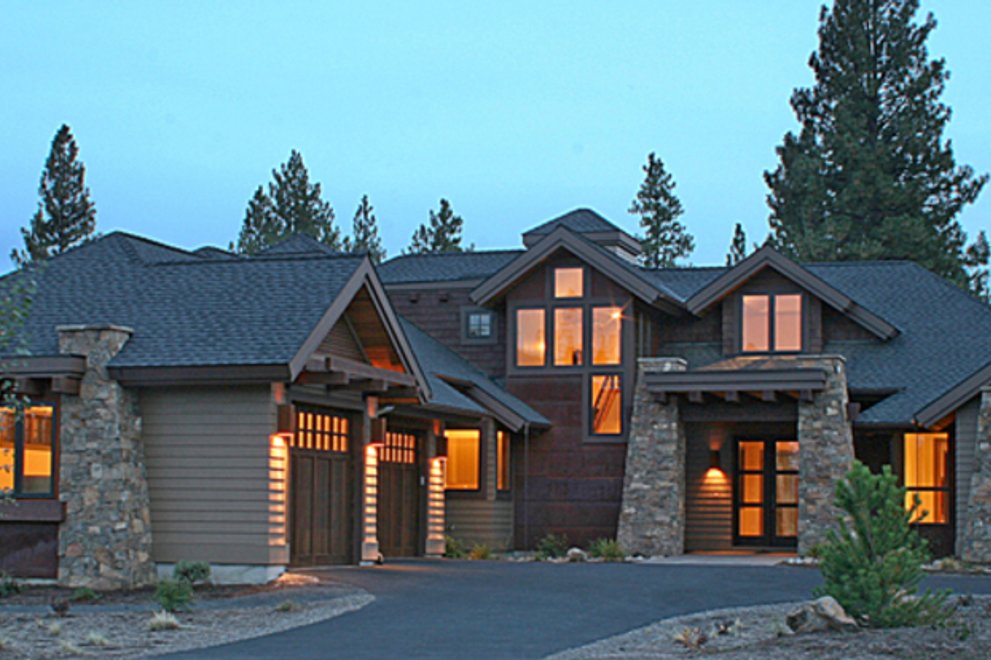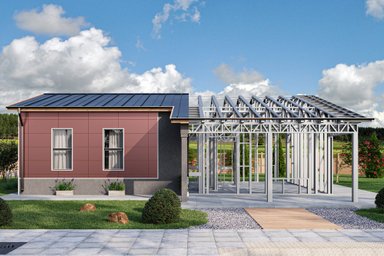As the days grow shorter and you turn the front porch light on earlier, have you thought about how bright that light is and whether it’s contributing to light pollution and making it more difficult for your neighbors, and perhaps astronomers, to see the stars?
Probably not, unless you have a working observatory in your town, like the cities of Flagstaff and Tucson, Arizona. Lowell Observatory is just outside of Flagstaff, and the city is an international Dark-Sky Community certified by the Tucson-based International Dark-Sky Association, or IDA. Tucson is home to Kitt Peak National Observatory, and a local dark skies ordinance makes it easy to see the amazing stars at night from many parts of the city.
Most larger cities now have some kind of lighting ordinance to reduce light pollution, says John Barentine, Ph.D., astronomer, and manager of the International Dark Sky Places Program founded by IDA. This program has certified 37 places around the world that recognize and promote excellent stewardship of the night sky through responsible lighting and public education. “Good lighting should make our spaces safe to transit at night, and this can be done without compromising the integrity of the night sky,” he says. This chart of acceptable and unacceptable lighting is from IDA.Reduce Light Pollution While Brightening Your Front Porch
Despite growing awareness that light pollution is an issue, it continues to be a problem because enforcement is not a high priority, grandfather periods are built in to some ordinances, and, as many cities convert older municipal lighting to LEDs to save money, they end up using more lights because of the reduced cost and the idea that the more lights we turn on at night, the safer we are. Barentine offers four suggestions to reduce light pollution and promote dark skies in your community—the “Four P’s” (where “P” refers to proper). Use outdoor lighting:
In the proper place. Brighten key areas (like your front door) while avoiding glare, and confine lighting to the area where you need it. Look for directional lighting for your front door, and put it in the right, full cutoff fixture. Directional lighting has reflectors or other optics that preferentially aim the light in a particular direction, while a conventional incandescent light bulb casts light in every direction, and, in a porch light fixture, some of that light ends up going into the sky. Many LED lamps are now highly directional (sometimes called Par lamps). Put the lamp in an opaque housing so that none of the light is emitted above a horizontal plane running through the bottom of the fixture (i.e., the part of the fixture closest to the ground), Barentine says. Lastly, think about mounting height—if a fixture is mounted high off the ground, it may cause light trespass and glare even if the fixture is fully shielded. Here’s the test for a porch light—is its light confined to the door, doorstep, and path approach to the doorstep? Or does it create a light wash against walls, illuminate landscaping, and/or cast light on a neighbor’s property?
At the proper time. Light areas only when people are present, extinguish lights before midnight, and don’t leave any lights (including security lighting) on overnight. Put security lights on motion sensors—potential perpetrators hate them.
In the proper amount. Light only in the quantity needed to safely see what you’re doing. Keeping light levels low, and preventing rapid transitions from low to bright lighting, allows your eyes to be in night-vision mode.
And in the proper spectrum. Avoid using lighting with strong blue light components (which means cool-white LEDs). Blue light has serious known, negative impacts on skyglow, nocturnal biology, and even human health. Choose warm-white lamps or other colors like amber. This also helps preserve night vision, which is strongly inhibited by blue light.
Harmony, Florida is a sustainable community near St. Cloud, Florida that received IDA’s first Dark Sky Development of Distinction Award in 2009. Harmony’s residential lighting is low-intensity and conforms to
dark-sky standards of downward-projected, full cutoff lighting (check out this alley light in Harmony) that shields light, reflecting it to the ground instead of emitting it up toward the night sky, out into nature, or over into your neighbor’s bedroom window. Fit your porch lights with low-power (600-900 lumens) CFLs or warm-white LEDs, and make sure that the light bulb doesn’t extend below the lampshade.
How to Shop for Non-Glare Lighting
The best thing you can do is to buy lighting products that carry IDA’s Fixture Seal of Approval (FSA). “The FSA program has influenced the lighting industry to make better products,” Barentine says. “The industry is now cognizant of issues like shielding and spectrum, and a feedback effect is generated as consumers and governments learn about the program and demand the certified products.”
Online retailers have an extensive selection of dark-sky friendly fixtures, according to Barentine. For example, here are some wall sconces appropriate for a front stoop from Ameritech Lighting.
Barentine sees an increasing number of good products on the shelves at Home Depot, Lowes, and Wal-Mart. Stay away from lighting fixtures such as carriage lights with clear glass housings that send light in almost every direction.
Most larger cities now have some kind of lighting ordinance to reduce light pollution, says John Barentine, Ph.D., astronomer, and manager of the International Dark Sky Places Program founded by IDA. This program has certified 37 places around the world that recognize and promote excellent stewardship of the night sky through responsible lighting and public education. “Good lighting should make our spaces safe to transit at night, and this can be done without compromising the integrity of the night sky,” he says. This chart of acceptable and unacceptable lighting is from IDA.Reduce Light Pollution While Brightening Your Front Porch
Despite growing awareness that light pollution is an issue, it continues to be a problem because enforcement is not a high priority, grandfather periods are built in to some ordinances, and, as many cities convert older municipal lighting to LEDs to save money, they end up using more lights because of the reduced cost and the idea that the more lights we turn on at night, the safer we are. Barentine offers four suggestions to reduce light pollution and promote dark skies in your community—the “Four P’s” (where “P” refers to proper). Use outdoor lighting:
In the proper place. Brighten key areas (like your front door) while avoiding glare, and confine lighting to the area where you need it. Look for directional lighting for your front door, and put it in the right, full cutoff fixture. Directional lighting has reflectors or other optics that preferentially aim the light in a particular direction, while a conventional incandescent light bulb casts light in every direction, and, in a porch light fixture, some of that light ends up going into the sky. Many LED lamps are now highly directional (sometimes called Par lamps). Put the lamp in an opaque housing so that none of the light is emitted above a horizontal plane running through the bottom of the fixture (i.e., the part of the fixture closest to the ground), Barentine says. Lastly, think about mounting height—if a fixture is mounted high off the ground, it may cause light trespass and glare even if the fixture is fully shielded. Here’s the test for a porch light—is its light confined to the door, doorstep, and path approach to the doorstep? Or does it create a light wash against walls, illuminate landscaping, and/or cast light on a neighbor’s property?
At the proper time. Light areas only when people are present, extinguish lights before midnight, and don’t leave any lights (including security lighting) on overnight. Put security lights on motion sensors—potential perpetrators hate them.
In the proper amount. Light only in the quantity needed to safely see what you’re doing. Keeping light levels low, and preventing rapid transitions from low to bright lighting, allows your eyes to be in night-vision mode.
And in the proper spectrum. Avoid using lighting with strong blue light components (which means cool-white LEDs). Blue light has serious known, negative impacts on skyglow, nocturnal biology, and even human health. Choose warm-white lamps or other colors like amber. This also helps preserve night vision, which is strongly inhibited by blue light.
Harmony, Florida is a sustainable community near St. Cloud, Florida that received IDA’s first Dark Sky Development of Distinction Award in 2009. Harmony’s residential lighting is low-intensity and conforms to
dark-sky standards of downward-projected, full cutoff lighting (check out this alley light in Harmony) that shields light, reflecting it to the ground instead of emitting it up toward the night sky, out into nature, or over into your neighbor’s bedroom window. Fit your porch lights with low-power (600-900 lumens) CFLs or warm-white LEDs, and make sure that the light bulb doesn’t extend below the lampshade.
How to Shop for Non-Glare Lighting
The best thing you can do is to buy lighting products that carry IDA’s Fixture Seal of Approval (FSA). “The FSA program has influenced the lighting industry to make better products,” Barentine says. “The industry is now cognizant of issues like shielding and spectrum, and a feedback effect is generated as consumers and governments learn about the program and demand the certified products.”
Online retailers have an extensive selection of dark-sky friendly fixtures, according to Barentine. For example, here are some wall sconces appropriate for a front stoop from Ameritech Lighting.
Barentine sees an increasing number of good products on the shelves at Home Depot, Lowes, and Wal-Mart. Stay away from lighting fixtures such as carriage lights with clear glass housings that send light in almost every direction.






